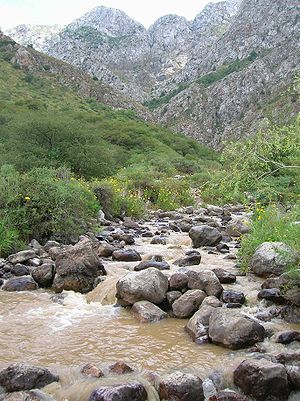South Kazakhstan Province (Kazakh: ???????? ????????? ??????, O?t?stik Qazaqstan oblisi, ???????? ??????) is the southernmost province of Kazakhstan. Population: 2,469,367 (2009 Census results); 1,978,339 (1999 Census results). Its capital is Shymkent, with 603,500 people. Other cities in South Kazakhstan include Turkestan, Sayram, Kentau, Arys, Shardara, Zhetisai, Saryagash, and Lenger. This province and Atyrau Province are Kazakhstan's two smallest provinces; both are about 117,300 square kilometers in area. South Kazakhstan borders the neighboring country of Uzbekistan (and is very near the Uzbekistan capital Tashkent), as well as three other Kazakhstan provinces: Karagandy Province (to the north), Kyzylorda Province (to the west) and Jambyl Province (to the east). The Syr Darya passes through the province, on its way to the Aral Sea. Also, an oil pipeline runs from Turkmenabat, Turkmenistan to Omsk, Russia (where it connects with a larger, Siberian pipeline) through South Kazakhstan. Oil, lead and zinc are refined in Shymkent.

Código ISO de una región
KZ-YUZ
Titulo del líder
Akim
Población a partir de
2013-02-01
Población total
2685009
Tipo
Province



Comentar
0